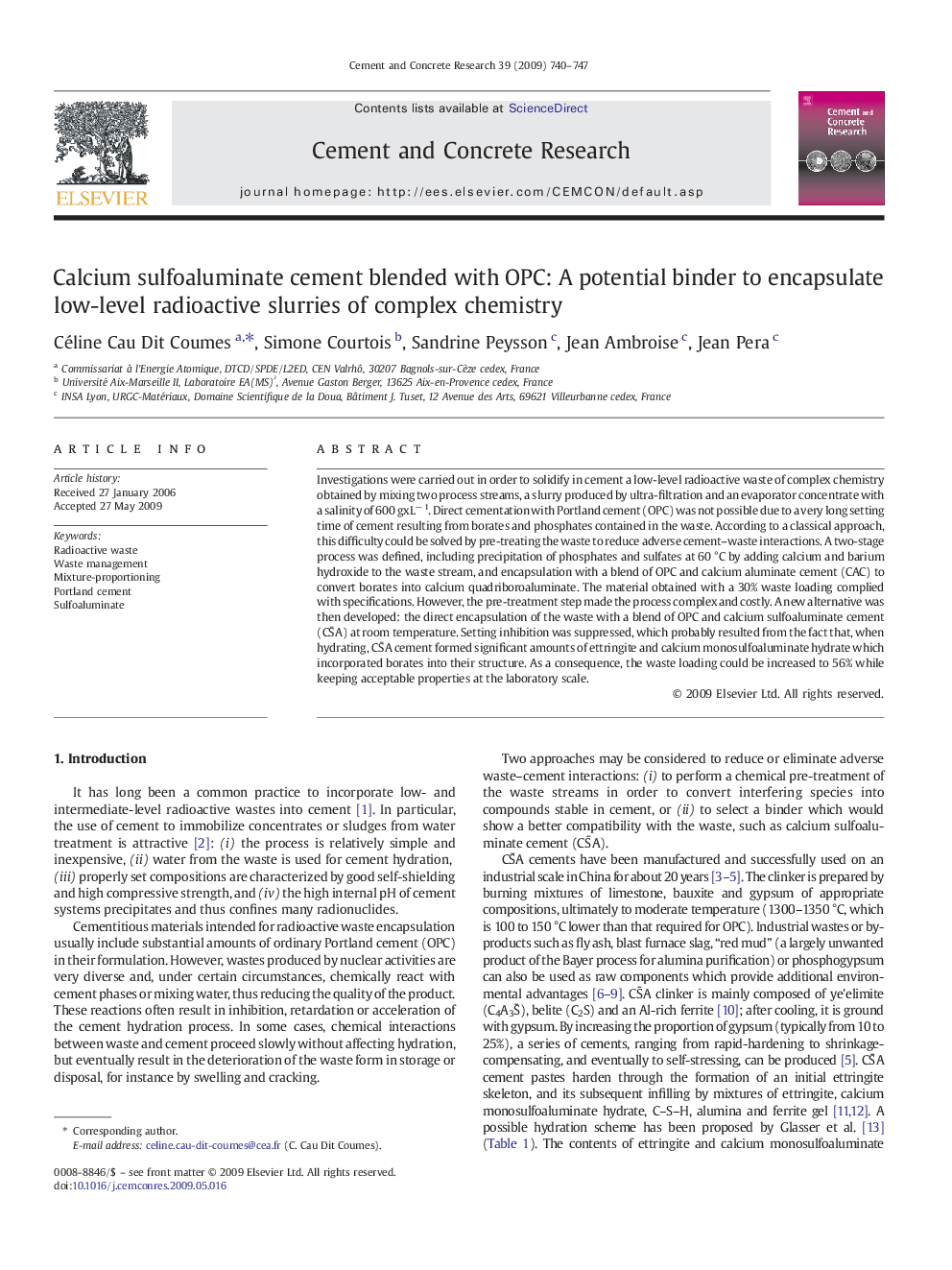| Article ID | Journal | Published Year | Pages | File Type |
|---|---|---|---|---|
| 1457181 | Cement and Concrete Research | 2009 | 8 Pages |
Investigations were carried out in order to solidify in cement a low-level radioactive waste of complex chemistry obtained by mixing two process streams, a slurry produced by ultra-filtration and an evaporator concentrate with a salinity of 600 gxL− 1. Direct cementation with Portland cement (OPC) was not possible due to a very long setting time of cement resulting from borates and phosphates contained in the waste. According to a classical approach, this difficulty could be solved by pre-treating the waste to reduce adverse cement–waste interactions. A two-stage process was defined, including precipitation of phosphates and sulfates at 60 °C by adding calcium and barium hydroxide to the waste stream, and encapsulation with a blend of OPC and calcium aluminate cement (CAC) to convert borates into calcium quadriboroaluminate. The material obtained with a 30% waste loading complied with specifications. However, the pre-treatment step made the process complex and costly. A new alternative was then developed: the direct encapsulation of the waste with a blend of OPC and calcium sulfoaluminate cement (CS̄̄A) at room temperature. Setting inhibition was suppressed, which probably resulted from the fact that, when hydrating, CS̄̄A cement formed significant amounts of ettringite and calcium monosulfoaluminate hydrate which incorporated borates into their structure. As a consequence, the waste loading could be increased to 56% while keeping acceptable properties at the laboratory scale.
